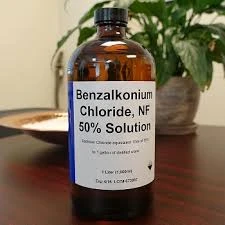coagulant flocculant
Coagulants and Flocculants Essential Components in Water Treatment
In the quest for clean and safe water, the role of coagulants and flocculants cannot be overstated. These chemical agents are vital in various water treatment processes, particularly in purifying drinking water and treating wastewater. Their application ensures that contaminants are effectively removed, ultimately leading to improved water quality.
Understanding Coagulants
Coagulants are chemicals that promote coagulation, the process where tiny particles in water clump together to form larger aggregates. This is essential in water treatment because impurities, such as suspended solids, bacteria, and organic materials, are typically too small to be removed through conventional filtration methods. By adding coagulants, such as aluminum sulfate (alum) or ferric chloride, these small particles bind together into larger clusters known as flocs.
The mechanism of coagulation involves neutralizing the electric charge that often keeps particles suspended in water. When coagulants are introduced, they destabilize the particles, allowing them to aggregate. This phenomenon occurs because water has a natural tendency to keep impurities separated due to their charges. Coagulants effectively reduce this repulsion, thereby facilitating the formation of larger flocs.
The Role of Flocculants
While coagulants initiate the process of particle aggregation, flocculants play a crucial role in promoting the growth and settling of these flocs. Flocculants are usually high molecular weight polymers that enhance the coagulation process by bridging the gaps between different floc particles. This results in the formation of even larger aggregates that can be easily separated from the water during subsequent treatment stages.
Common flocculants include polyacrylamides and natural organic polymers such as chitosan. These agents are particularly effective in enhancing the sedimentation process, where larger flocs settle faster under the influence of gravity. The use of flocculants can significantly reduce the time required for solids to settle, thereby improving the efficiency of the water treatment process.
coagulant flocculant

Applications of Coagulants and Flocculants
The applications of coagulants and flocculants extend beyond drinking water treatment. They are also used in various industries, including food processing, pharmaceuticals, and paper production. In wastewater treatment, these agents are crucial for removing contaminants and ensuring compliance with environmental regulations.
For instance, in municipal wastewater treatment facilities, coagulants and flocculants are integral to the secondary treatment process, where they help in reducing biochemical oxygen demand (BOD) and total suspended solids (TSS). Their use leads to significant improvements in the clarity and quality of effluent, making it safer for discharge into natural water bodies or for reuse.
Environmental Considerations
While the use of coagulants and flocculants is essential, there are environmental considerations to keep in mind. The by-products generated during the coagulation and flocculation processes can sometimes pose disposal challenges. Moreover, the selection of chemical agents should also consider their toxicity and potential impact on aquatic ecosystems. Environmental regulations promote the use of biodegradable and less toxic materials, thus encouraging the adoption of more sustainable practices in water treatment.
Conclusion
In summary, coagulants and flocculants are indispensable tools in the field of water treatment. Their ability to remove impurities and enhance the clarity of water has made them essential in both municipal and industrial applications. As the demand for clean water continues to grow, ongoing research and development in this field are critical for improving the efficiency and environmental sustainability of water treatment processes. By understanding the roles and mechanisms of these agents, we can better appreciate their importance in ensuring access to safe and clean water for all.
-
Water Treatment with Flocculant Water TreatmentNewsJun.12,2025
-
Polymaleic AnhydrideNewsJun.12,2025
-
Polyaspartic AcidNewsJun.12,2025
-
Enhance Industrial Processes with IsothiazolinonesNewsJun.12,2025
-
Enhance Industrial Processes with PBTCA SolutionsNewsJun.12,2025
-
Dodecyldimethylbenzylammonium Chloride SolutionsNewsJun.12,2025





